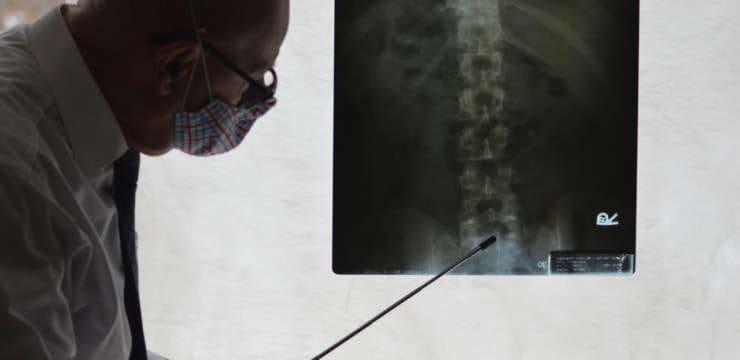Can the straight leg test help find the cause of back or hamstring pain in individuals experiencing it? Straight Leg Test The straight leg raise…


Can the straight leg test help find the cause of back or hamstring pain in individuals experiencing it? Straight Leg Test The straight leg raise…

Should individuals experiencing lower left back pain see a healthcare provider if it lasts more than a few weeks? Left Side Lower Back Pain Lower…

Are there blood tests for individuals with chronic and severe back pain symptoms that can help healthcare providers diagnose? Blood Tests To Help Diagnose Back…

For individuals experiencing piriformis syndrome. Can knowing the causes and what it feels like help in diagnosis and treatment? Managing Piriformis Syndrome Piriformis syndrome is…

How do healthcare professionals in a chiropractic clinic provide a clinical approach to recognizing impairment for individuals in pain? Introduction Any article you read…

How do healthcare professionals in a chiropractic clinic provide a clinical approach to preventing medical errors for individuals in pain? Introduction Medical errors resulted in…

Introduction The body is a complex machine with various muscles, tendons, ligaments, and vital organs that each play a specific role in maintaining functionality and…

Diagnosing ankylosing spondylitis usually involves multiple tests. When doctors order blood tests to diagnose ankylosing spondylitis, an individual is experiencing worsening symptoms in their back…

The Adams forward bend test is a simple screening method that can help with scoliosis diagnosis and help in developing a treatment plan. The exam…

A viscerosomatic response or VSR is when the internal organs are going through some distress, illness, or injury, causing pain symptoms. An example is the…

For older individuals, experiencing frequent low back pain could turn out to be a sacral fracture. They tend to occur in individuals over the age…

Sciatica Causes: The sciatic nerve forms by the union of Lumbar4 to Sacral31 nerve roots and exits the pelvis through the greater sciatic foramen, below…

A common symptom of sciatica is radiating/spreading pain running down the leg. However, the leg pain could be something to do with the blood vessels.…

Neck crepitus is a grinding sound that comes from moving or rotating the neck. Usually, it is not something to worry about, as the body…

Anyone from young children, adults, and the elderly can get a spinal infection. Individuals can have an infection: In vertebral bone tissue An intervertebral disc…

Scoliosis in adolescents and teens can be corrected with proper bracing, adjustments and lead a normal life. For adult scoliosis correcting the problem is more…

Migraines and Fibromyalgia have one thing in common, they are both due to mitochondrial dysfunction. More often than not we see those with mitochondrial dysfunction suffering from more than one type of discomfort. The first thing we do is take a detailed history, to truly understand the patient’s history, environment, previous treatment plans, and symptoms.Â
Mitochondrial function is a necessity for the body to perform properly. There have been studies that show that magnesium and malic acid is needed for mitochondrial function. In fact, giving magnesium malate 2 tabs, three times a day showed decreased pain in fibromyalgia patients. Magnesium also helps as a laxative and is often helpful in cleansing the gut and beginning to restore gut health. Another step we take to restore gut health is to perform a food sensitivity test to make sure they do not have any specific IgG reactions to foods consumed in their daily diet. We use the Food Sensitivity Test from Vibrant America. Genes
There is research supporting that individuals who have an MTHFR gene mutation are more susceptible to instability in the central neurovascular system. Those who have a MTHFR gene mutation can not convert folate to methylfolate. This is linked to migraines, mood problems, and increased susceptibility for fibromyalgia. For more information regarding MTHFR, please refer to GeneCards: MTHFR.
Nutrition / SupplementsÂ
After analyzing lab work, and when implemented correctly, there are many foods and supplements that can help patients with symptoms associated with mitochondrial dysfunction.Â
Some foods to eat include:Â
almonds and other nuts and seeds
broccoli
beans
tofu
oatmeal
dark leafy greens
Avocado
The supplements we use are from Biotics Research and include:
Bio-Multi Plus
ProMulti Plus
Bio D MulsionÂ
B12-2000
Optimal EFA caps
A.D.P